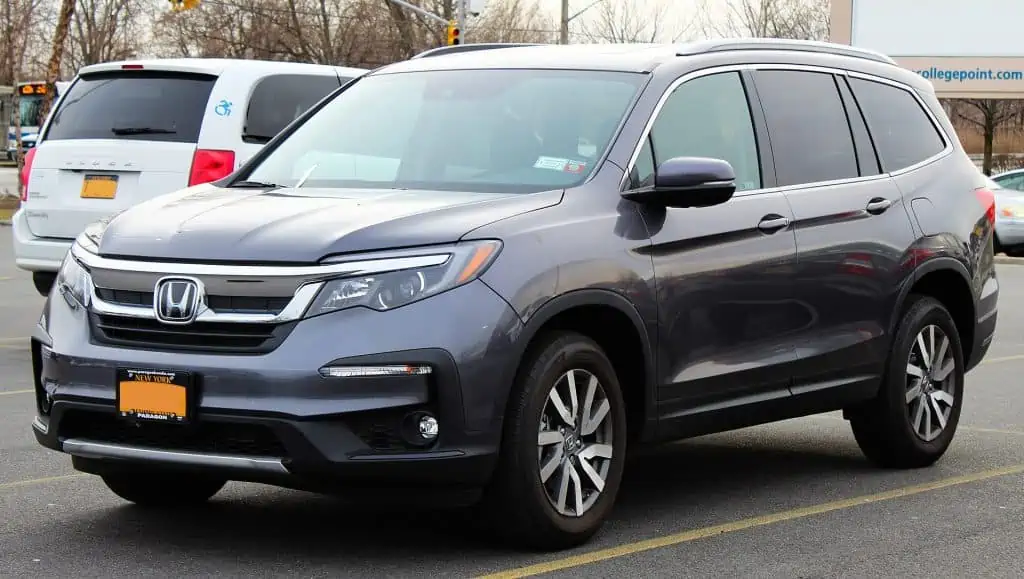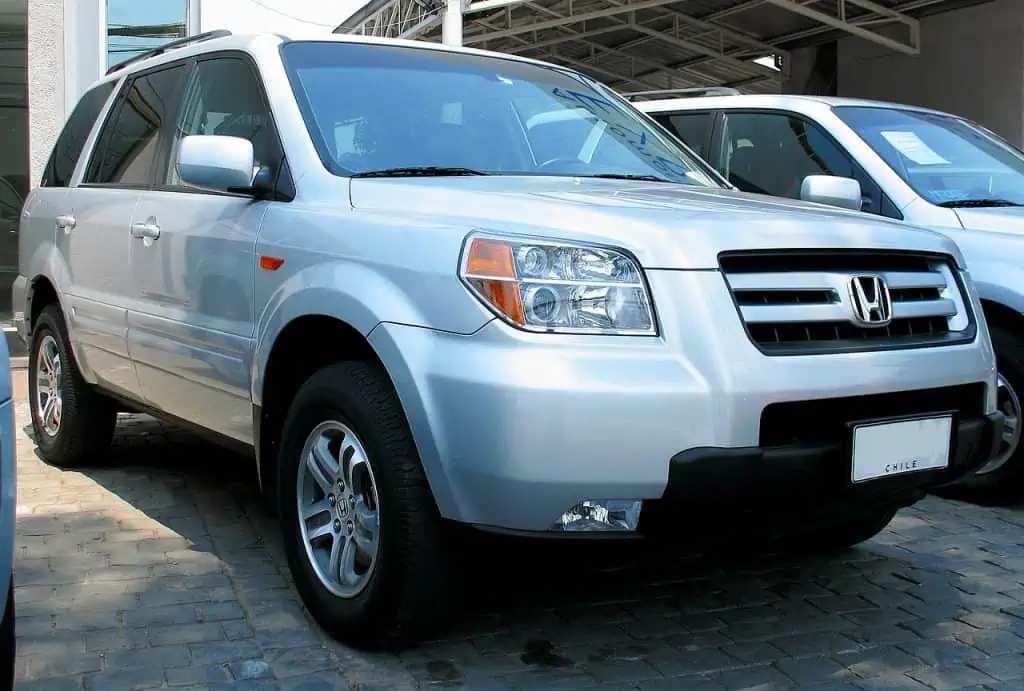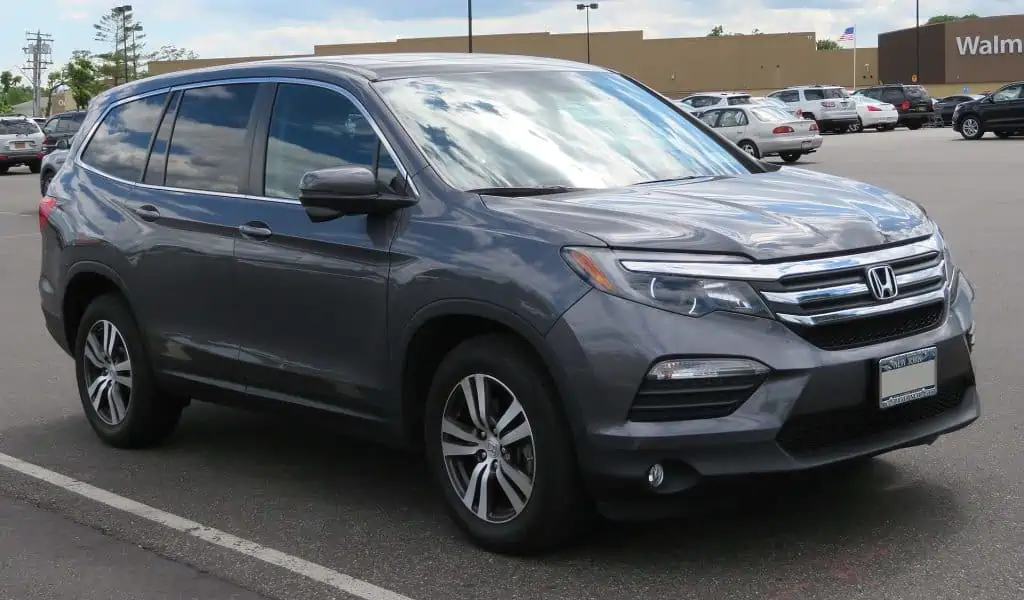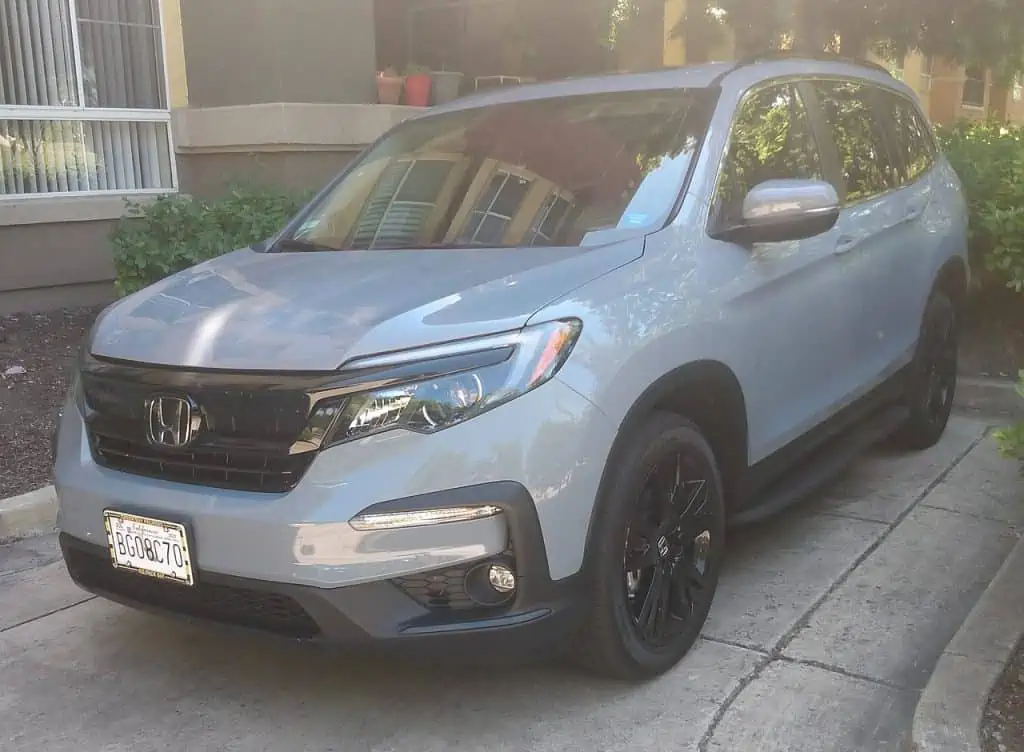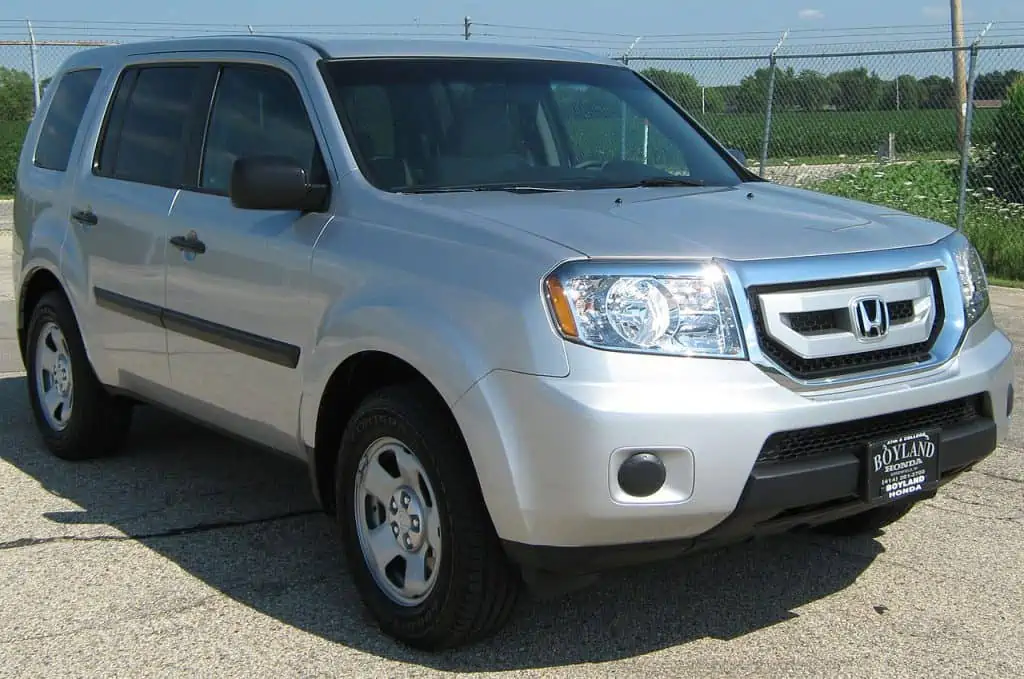Even if you’ve settled on a model, it may be challenging to choose when buying a car. What year Honda Pilot should you purchase if you’re in the market for one?
A great option for those seeking a family-friendly SUV is the Honda Pilot. Even though the design and specifications have changed over time, a few essential components haven’t.
Due to its eight-person capacity, the Pilot has always stood out among Honda’s SUV lineup. Additionally, the Pilot’s accessible all-wheel drive makes it a great compromise for those who need to transport a big group in case they decide to deviate from the path less traveled.
Additionally, well-equipped Pilots have a carrying capacity of 5,000 pounds. Which one is best for you, despite the Pilot being a family adventure vehicle with certification?
The Pilot has advanced significantly for the 18 years since its debut in 2003. Since its launch, the Honda Pilot has undergone three generations of changes.
While the second generation runs from 2009 to 2015, the first generation covers the years 2003 to 2008. (the best year for Honda Pilot). The third and most recent generation, which started in 2016, is still active today.
A Summary of the Honda Pilot’s History
In 2002, the 2003 Honda Pilot, the predecessor to the current model, made its premiere. It was created to be a family-friendly SUV.
The 2003 Honda Pilot has three rows of seating that could accommodate eight people and included standard four-wheel drive. Additionally, it allowed Honda Pilot owners to fold their seats down to provide a total cargo volume of around 90 cubic feet.
Honda has since introduced three iterations of the Pilot. The 3.5-liter V6 engine in the first generation, which included the 2003 model, was capable of 240 horsepower. It could tow 4,500 pounds and had a front-wheel-drive option. Over time, Honda also introduced stability control and front-wheel drive.
A 2019 Honda Pilot by Kevauto / CC BY-SA 4.0. As you may anticipate, the Honda Pilot’s third and most recent iteration was launched in 2016 with the newest features. Although it has a less unique design than the first-generation versions, it is nonetheless a strong and thrilling explorer.
When the Honda Pilot’s second generation was revealed in 2008, it advanced the situation. It had a new and upgraded 3.5-liter V6 engine that could produce 250 horsepower, and it was a little bit bigger than the first Honda Pilot.
The Honda Pilot’s third generation was most recently released in 2015, and it took the vehicle to a new level. A reworking of the exterior resulted in a 10% reduction in drag.
Additionally, the 3.5-liter V6 engine was once more modified to increase its horsepower to 280. As if all of that weren’t enough, Honda has started introducing additional safety technologies like adaptive cruise control and lane keep assist.
Over the past 20 years, Honda Pilots have undergone significant changes. And it appears like Honda will keep making minor adjustments to the Pilot to keep it running for many years to come.
How Reliable Is the Honda Pilot Car?
It’s crucial to take into account whether the car you choose will be dependable and able to complete the task. As was already mentioned, the Honda Pilot has been around for a while and has gained the trust of its users by consistently being dependable.
A dependable car is the Honda Pilot. The Honda Pilot is the safest, friendliest, and most enjoyable vehicle in its class, according to J.D. Power surveys. 78 out of 100 is a very good reliability rating for the Honda Pilot 2021.
The Pilot is Honda’s largest vehicle, making it a strong and trustworthy car that will keep you safe and comfortable on your travels. Additionally, you can be confident that the Honda Pilot will cost you less to maintain than some other SUVs.
The Best-Valued Honda Pilot Models: The First Generation 2003 to 2008
First-generation Honda Pilots were intended to stand out from the outset. If the Pilot’s dimensions and features weren’t alluring enough, Honda made it abundantly plain in their ad campaign, calling it “The Ultimate Family Adventure Vehicle.”
It came with all-wheel drive as standard and starting with the 2006 model year, a front-wheel drive version was also offered.
An automated five-speed transmission and a Honda J series 3.5-liter V6 engine are standard on all first-generation Pilot cars. The horsepower output ranges from 240 to 255 depending on the model year.
For the first-generation Honda Pilot, the EPA predicts combined gas mileage of 17 mpg for all-wheel-drive models and 18 mpg for front-wheel-drive models.
All-wheel-drive vehicles receive 20 mpg on the highway compared to 22 mpg for front-wheel-drive vehicles. Although the fuel efficiency of the first-generation Pilot wasn’t very impressive by today’s standards, it was adequate at the time.
A few products from the first generation have been recalled. As with many Hondas of this era, there are a few active recalls involving defective and improperly positioned airbags for this particular model. Additionally, a recall has been issued for first-generation Pilots owing to sticky accelerator pedals.
A 2006 to 2008 Honda Pilot by order_242 / CC BY-SA 2.0. Honda Pilots of the first generation were designed to be distinctive from the start. Honda proclaimed the Pilot to be “The Ultimate Family Adventure Vehicle.” in their advertising campaign as if its dimensions and attributes weren’t tempting enough already.
A recall is also in effect for older models because of incorrect headlamp wiring. Even while these issues should be carefully considered if they have been fixed, buying a first-generation Pilot shouldn’t be a problem. Researching a secondhand car’s past is typically a wise move before buying one.
First-Generation Honda Pilot’s Perks and Specifications
A fairly advanced piece of technology was brought by The Pilot. Given that it isn’t a high-end luxury car, the fact that satellite-linked navigation and a rear entertainment system with a DVD player were available right away is very amazing in terms of technology for the time.
The Pilot is the perfect car for a family vacation because it also features four 12v power outlets, nine cupholders, and a ton of storage capacity.
The Honda Pilot’s ground clearance is a massive eight inches on the first-generation model. First-generation cars can also pull up to 4,500 pounds. While a Pilot won’t be able to tow a car, it will be simple to tow a small travel trailer or boat.
Prices for these model years vary widely depending on mileage and condition. Prices will probably start at around $1,500 and rise to over $10,000 for later versions with low mileage.
On the other hand, if you have $5,000 to spend, you can probably find a well-kept vehicle with respectable mileage and amenities.
Advancements In Technology for the Honda Pilot Models: The Second Generation 2009 to 2015
The second-generation Pilot was produced from 2009 to 2015 and featured several extremely significant contemporary conveniences. The latter models had more streamlined and contemporary body lines even if the overall size and shape were similar to that of the first generation. 2015 is regarded as the Honda Pilot’s best year.
Second-generation automobiles still come with a 3.5-liter engine. To increase fuel efficiency, Honda, on the other hand, used cylinder deactivation technology. Depending on how much power is needed, the engine shuts down two or three cylinders at cruising speeds.
The amount of fuel saved is enhanced by using fewer cylinders. Because of this technology, the second-generation Pilot boasts much better EPA fuel-efficiency ratings.
Both the front-wheel-drive and all-wheel-drive versions score 20 mpg overall. On the interstate, all-wheel-drive cars earn 24 mpg, while front-wheel-drive models get 25 mpg. Given that second-generation automobiles still have a 250 horsepower rating, this is a major upgrade over first-generation models.
Airbag recalls have plagued the second-generation Pilot throughout its entire production run, just like they did with the first. Early models up to 2011’s seat belt stitching have been recalled owing to faulty or inadequate stitching, which might lead to the seatbelt disengaging from the chassis in the event of an accident.
Other early models are being recalled because of front suspension parts that have loose nuts that could result in steering loss. Premature piston wear in some 2013 Honda Pilot models has been linked to engine failure.
An Offroad Design for the Second-Generation Honda Pilot
Honda was spot on with the second-generation Pilots’ use of current technology, just as it was with the first-generation models. Voice controls and satellite navigation have been added to The Pilot’s GPS game.
A 2017 Honda Pilot by Kevauto / CC BY-SA 4.0. The addition of a nine-speed automatic transmission for front- and all-wheel-drive models are possibly the largest change for the new generation Honda Pilot. The 3.5-liter V6 engine is still housed under the hood, but it now generates 280 horsepower.
Beginning with the 2013 model year, all Pilots were required to have a backup camera as standard equipment. Some second-generation vehicles included an XM radio, and the rear-seat DVD system was still available.
Family-friendly features have also become more prevalent. Twelve cupholders in total are included with the second-generation Pilot. The number of 12-volt power outlets was reduced to three due to the loss of one of the original three.
But as soon as a 115-volt outlet with a plug similar to that found in a home became accessible, the family was able to bring things like phone chargers and portable game systems. The second-generation Pilots could tow up to 4,500 pounds, much like the first.
While second-generation Pilots in earlier models can be obtained for less than $10,000, you’ll probably have to spend more than $10,000 if you want one with all the bells and whistles. The most appealing models in terms of technology are those from 2013 and later.
If you can do without a primary backup camera and make a few other minor changes, buying a model made before 2013 can save you a ton of money. Overall, you can obtain a superb second-generation Pilot for $15,000 or less.
Major Facelifts In the Honda Pilot Models: The Third Generation 2016 to Present
As you can expect, the third and most recent version of the Honda Pilot debuted in 2016 with the newest features. Its design is less distinctive than the first-gen models, but it is still a potent and exhilarating adventurer.
The new Pilot is on the luxury side of the range rather than the primary side because it offers more trim choices and options. But it does boast a top-notch all-wheel-drive system.
Perhaps the biggest change for the new Pilot is the addition of a nine-speed automatic transmission for front- and all-wheel-drive variants. Under the hood, the 3.5-liter V6 engine is still there, but it now makes 280 horsepower.
The third generation of the Pilot is the most fuel-efficient model yet, with a combined fuel efficiency rating of 23 mpg. The nine-speed transmission can achieve up to 27 mpg on the highway according to EPA calculations. For a vehicle of its size, that is impressive.
The third-generation vehicles have undergone multiple recalls despite their youth. As you might have realized by this point, some of these are connected to airbags. However, it differs from preceding models in some ways.
Due to interior panels that were installed improperly, certain vehicles have had their side-curtain airbags recalled. Additionally, early models can be recalled because of subpar welds around the gas tank that could cause a leak.
Rearview camera failures and improperly installed software are both included in recalls. The crucial recall to be aware of started with occurrences involving the 2018 model year when faulty timing belt teeth could lead to catastrophic engine failure.
Comfort and Safety Perks In the Present Models of Honda Pilot
The most luxurious and safest Pilots are without a doubt the third-generation models. The elite and black edition trim levels include luxurious leather interiors with heated and cooled seats, a heated steering wheel, and an entertainment system with several optional displays and in-dash Blu-ray features.
A 2022 Honda Pilot by DestinationFearFan / CC BY-SA 4.0. With a combined fuel efficiency rating of 23 mpg, the third generation of the Pilot is the most fuel-efficient model yet. According to EPA estimations, the nine-speed transmission can deliver up to 27 mpg on the interstate. That is remarkable for a car of its size.
The third generation differs from its predecessors in terms of safety features with blind-spot monitoring, lane-keeping assistance, cross-traffic detection, and accident prevention being just a few examples. The third-generation Pilot keeps the spirit of exploration alive and well.
Vehicles with front-wheel drive have a towing capability of up to 3,500 pounds, while those with all-wheel drive have a towing capacity of up to 5,000 pounds. All of the aforementioned technology makes traveling by car more comfortable than ever before for both drivers and passengers.
On the low end, a third-generation Pilot will run about $20,000. Even for previously owned models, don’t be shocked if prices surpass $30,000 if you want all the bells and whistles. If you’re seeking to buy new, the LX base trim level starts at $32,550. The starting MSRP for the all-wheel-drive Black Edition is $50,220.
Which Is the Best Year for the Honda Pilot and Why?
If you want to save money on a car, buying a used one is a great choice. All you need is a basic grasp of the car you want to buy, and you’ll be good to go. Now let us tell you which year was greatest for the Honda Pilot.
The Honda Pilot has never been better than in 2015. Additionally, we can recommend any of the Honda Pilot’s second-generation versions with confidence if you want more options. They are trustworthy and will give you the required protection when driving.
One of the market’s most capable SUVs is the Honda Pilot. Buying a new or used Honda Pilot won’t be a mistake because Honda has worked hard to advance its technology and other features throughout the years.
Which are the Honda Pilot Years to Avoid?
The 2003 model of the Honda Pilot, which unhappily has continued to use the model name for a considerable amount of time, had a rough start. But even so, certain model years are much more consistent than others.
The following are the Honda Pilot model years to avoid, and we’ll discuss why in the section that follows.
- 2003
- 2005
- 2009
- 2011
- 2013
- 2016
The Honda Pilot has been manufactured since 2003, hence this list is not very long. But as you can see, following the original release, they had to fix several design issues.
Early in the new millennium, many purchasers were wary of the safety and effectiveness of SUVs in general, which made it difficult to launch a new SUV model. Even yet, some of the Pilot’s shortcomings were well known.
Let’s look at some of the problems that these models ran into the most frequently.
Which are the General Problems with the Honda Pilots?
To help you decide which model you want to drive, here are some of the most common Honda Pilot problems.
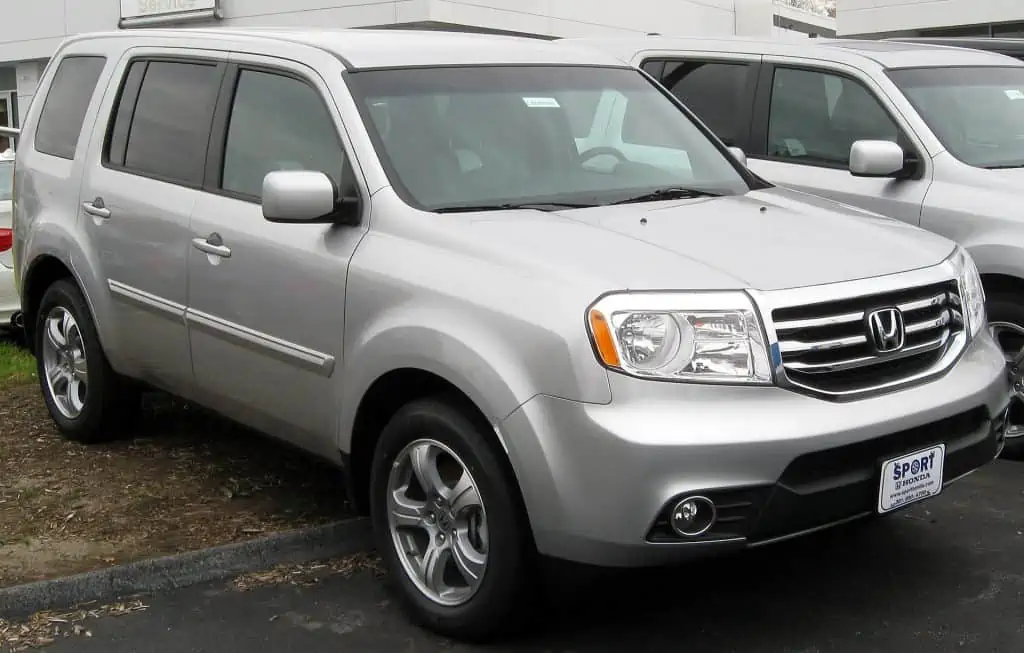
1. Transmission Issues
The most serious of all the issues that Honda Pilots have is probably the transmission breakdown issue. Thankfully, this problem mainly affects the 2003 model; nonetheless, there have been a few isolated transmission problems in subsequent Pilot models.
Taking on a vehicle with a transmission problem is a huge deal because transmission failure is one of the most expensive repairs you can make to your car. Can worse, transmission problems in a crowded area can make driving difficult and even result in collisions.
2. High Amounts of Oil Consumption
Overly high oil consumption is a common issue with SUVs, and the Honda Pilot has experienced it in some model years. This isn’t a major matter if you know the model will need oil after 10,000 miles, but if you don’t, it may be a big deal.
The main problem is that, although only if you let it get too low generally, low oil can harm the engine as well as cause it to overheat.
Keep an oil container in the trunk and fill it up every two weeks to simulate an oil leak to prevent this. On the other hand, using a lot of oil could break the bank and make maintaining your car difficult.
3. Issues with Paint Peeling Off
Peeling paint is mainly an aesthetic issue, but if you live somewhere where there is a lot of rain or rust, it might cause worse problems. Although we don’t believe that a car’s peeling paint is serious enough to stop you from purchasing it, you should be aware that you might eventually need to have it repainted.
4. Repetitive Diagnostic OBD Codes
Recurring fault codes are typically more unpleasant than harmful unless they cover up a serious issue. These happen when your Pilot’s sensors pick up a problem that isn’t there.
Recurring fault codes are typically simple to identify, either by you or your technician, but problems might occur when you get a valid fault code after your Pilot has trained you to ignore them. In these circumstances, you run the risk of accidentally damaging your car if you confuse a legitimate fault code with another false alarm.
5. Fuel Injector Issues
Fuel injector failure is another frequent issue with Honda Pilots, and it can be an expensive fix. Contrary to other issues that are more common in early-generation versions, this problem is more common in later Honda Pilot vehicles, especially in 2016.
This issue is particularly frustrating because it often manifests around 60k miles, which makes it an early part failure for the majority of cars. You should do your study before purchasing a Honda Pilot because the cost of repairs could be several thousand dollars.
Which are the Best Honda Pilot Models In Terms of Specs, Reliability, Build, and Handling?
There are several options available if you want a Honda Pilot that is a little more trustworthy than the one we just looked at. Despite a few serious problems, the Honda Pilot’s majority of models have shown to be dependable and durable.
- 2004
- 2006
- 2007
- 2008
- 2010
- 2012
- 2014
- 2015
- 2017
- 2018
- 2019
- 2020
Like the first-generation Pilot, the second-generation Pilot has experienced many airbags recalls throughout its entire production run. The seat belt stitching on early models up to 2011 has been recalled due to faulty or insufficient stitching, which might cause the seatbelt to disengage from the chassis in the case of an accident.
All of these solutions are reliable, and only sometimes experience component failures or other problems that plagued earlier Pilot versions.
Is an Investment In a Honda Pilot a Good One?
If you intend to sell your car in the future, it is critical to understand whether its value will endure. The Honda Pilot does indeed keep its worth well. The price of a Honda Pilot will drop by about 40% in the first five years, which is wonderful and makes it an all-around great car.
This suggests that, if you so desired, you might sell your car for a very reasonable amount. Their resale value is great, significantly superior to that of other cars in the same class; but, to sell your car for a profit, you must keep it in excellent condition.
What Is the Lifespan of a Honda Pilot?
Owners of Honda Pilot vehicles have grown to enjoy and value every one of the characteristics we just listed over the past 20 years. But the durability attached to Honda Pilots is what people have grown to love and value above all else.
Honda Pilots often have a lifespan of more than 200,000 miles. Internet discussion boards are entirely devoted to Honda Pilot owners boasting about their vehicles’ 200,000-mile milestones.
And, dare I say it, that’s just the beginning! Many Honda Pilot owners have driven their vehicles well over 300,000 miles. It’s a major factor in why so many individuals have started to think about purchasing a used Honda Pilot.
What Factors Can Shorten a Honda Pilot’s Life Span?
Not every Honda Pilot on the road today will last for 200,000 or 300,000 miles, to be clear. There are a variety of factors that can influence a Honda Pilot’s lifespan and how long you can keep one operating.
One of the main factors that can harm your Honda Pilot is the environment in your location, for instance. Your Pilot’s lifespan may be significantly shortened if you reside anywhere that experiences extreme winter temperatures.
The cold can damage and degrade the metal parts of your Pilot, as well as make the fluids thicker than they ought to be, which complicates matters concerning how well your engine performs.
A Honda Pilot can potentially suffer damage from the salt that is spread on the roads throughout the winter in colder locations. It might harm your Pilot’s tire wells, brake rotors, and other metallic parts.
All of these factors will have an effect on vehicles besides Honda Pilots. But even so, you’ll want to keep these variables in mind.
How Can I Extend the Life of My Honda Pilot?
You can maintain a Honda Pilot until the wheels come off of it if that’s what you want to do. To keep your Honda Pilot around for a very long time, you will need to be completely prepared to perform the necessary maintenance.
The first thing you must do is periodically change the oil in the Honda Pilot. See how frequently Honda recommends you change the oil by reading the owner’s manual for the Honda Pilot. Additionally, you should consider changing it even more often than recommended.
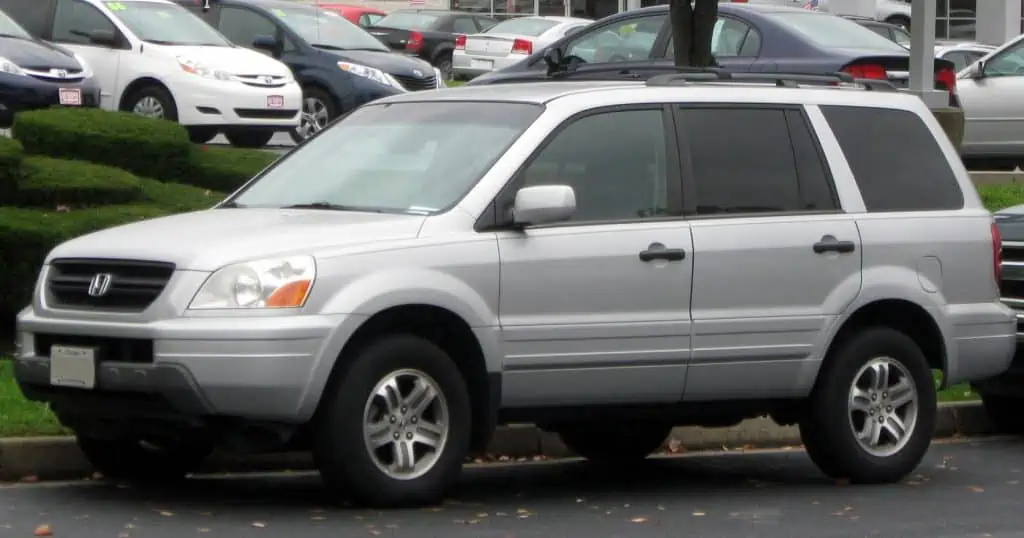
You should pay close attention to your transmission and develop the practice of performing transmission fluid flushes sometimes in addition to changing your oil to guarantee that your engine always gets the oil it needs.
Typically, you should replace your transmission fluid every three years or every 36,000 miles, whichever comes first. It keeps your transmission operating smoothly.
You’ll also want to perform some preventative maintenance procedures once the 100,000-mile milestone has been reached on your Honda Pilot.
For instance, replacing your timing chain and water pump would be an excellent option as they are both known to malfunction at this time. By doing this, you might be able to keep your engine from getting damaged.
Additionally, if you continue to log mileage that is in the triple digits, tune-ups are going to become your best buddy. To keep your Pilot in good working order, you should have your mechanic do tune-ups for you.
The Conclusion
When it comes to SUVs, few automakers have a better reputation than Honda. The Pilot has, however, had more than a few poor years over its history, and no Honda SUV is perfect.
You should be aware of which Honda Pilot model years to steer clear of and why if you’re serious about buying a durable and reliable SUV.
We discussed which years to stay away from, the most prevalent problems that cause some vehicles to run less reliably, and which year is best for the Honda Pilot.
A couple of the latest model years of the Honda Pilot are far more dependable, albeit some of these have been known to experience gearbox issues.
You shouldn’t let the fact that people have complained stop you from truly exploring some of the more recent models because, as you are aware, no car can be built perfectly.

A 2019 Honda Pilot by Kevauto / CC BY-SA 4.0

Jim Wicks is the founder of MotorVehicleHQ. With over two decades of experience in the automotive industry and a degree in Automotive Technology, Jim is a certified car expert who has worked in various roles ranging from a mechanic, car dealership manager, to a racing car driver. He has owned more than 20 cars over the past 15 years. Ask him about any vehicle you see on the road and he can tell you the make, model and year. He loves the aesthetics of all things cars, and keeps his vehicles in pristine condition.
In his free time, Jim enjoys getting his hands dirty under the hood of a classic car or taking long drives along the country roads. His favorite car? A 1967 Shelby GT500, a true classic that, according to Jim, “represents the pure essence of American muscle.”
